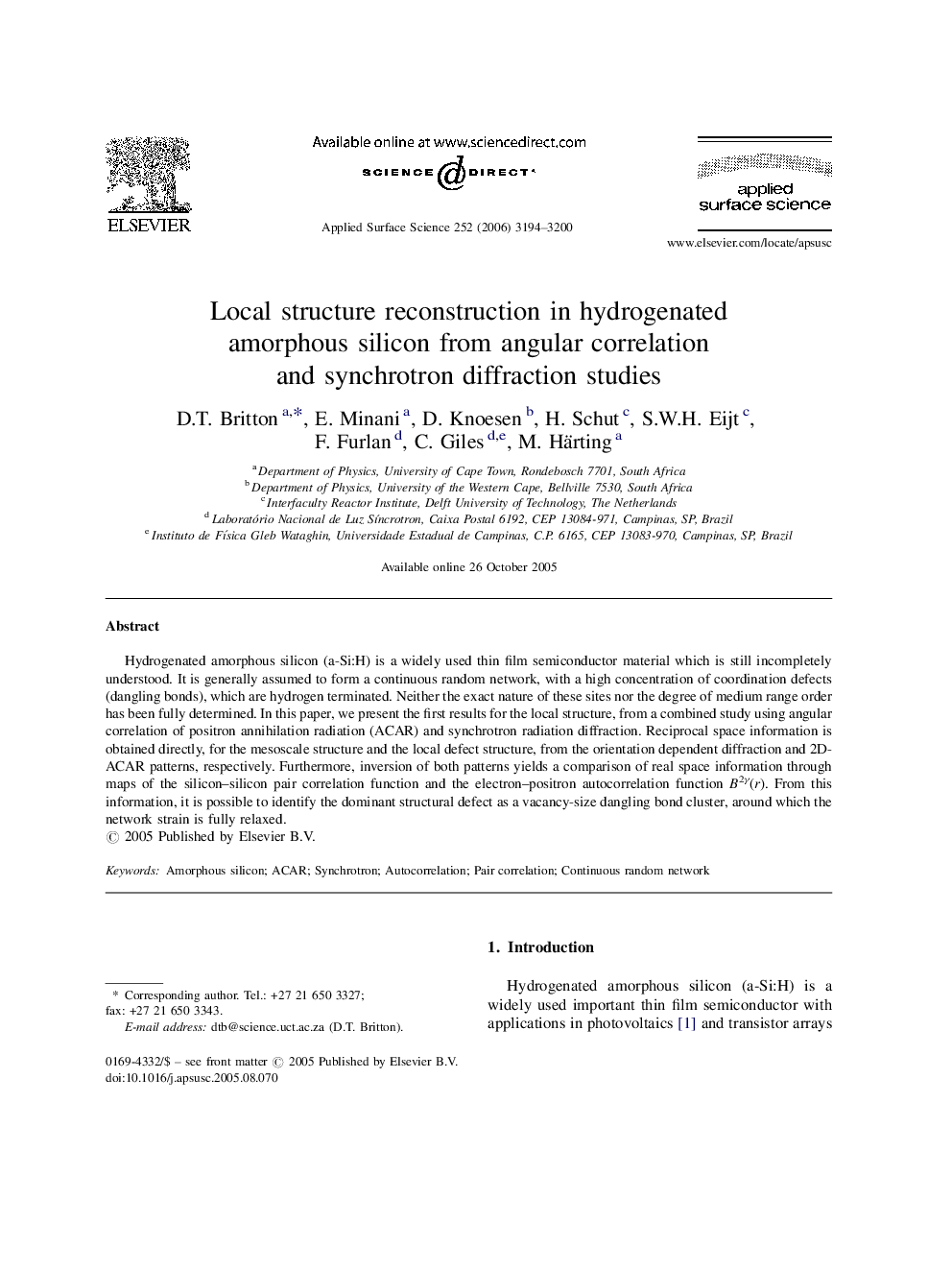| Article ID | Journal | Published Year | Pages | File Type |
|---|---|---|---|---|
| 5366938 | Applied Surface Science | 2006 | 7 Pages |
Hydrogenated amorphous silicon (a-Si:H) is a widely used thin film semiconductor material which is still incompletely understood. It is generally assumed to form a continuous random network, with a high concentration of coordination defects (dangling bonds), which are hydrogen terminated. Neither the exact nature of these sites nor the degree of medium range order has been fully determined. In this paper, we present the first results for the local structure, from a combined study using angular correlation of positron annihilation radiation (ACAR) and synchrotron radiation diffraction. Reciprocal space information is obtained directly, for the mesoscale structure and the local defect structure, from the orientation dependent diffraction and 2D-ACAR patterns, respectively. Furthermore, inversion of both patterns yields a comparison of real space information through maps of the silicon-silicon pair correlation function and the electron-positron autocorrelation function B2γ(r). From this information, it is possible to identify the dominant structural defect as a vacancy-size dangling bond cluster, around which the network strain is fully relaxed.
